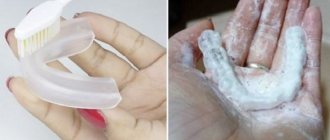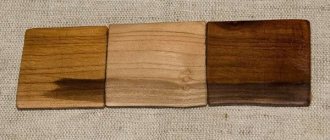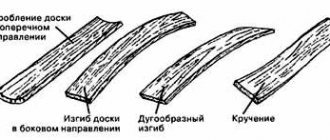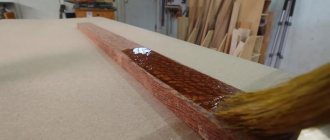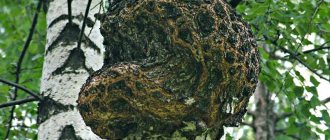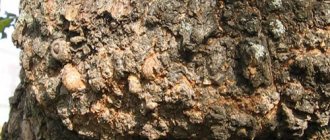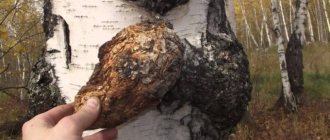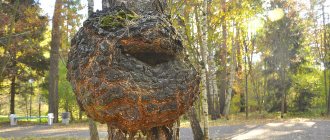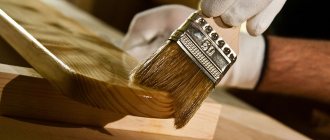Quote from the message
Kap, suvel.
Harvesting, drying, properties. PRODUCTS FROM DRAP Cap, suvel. Harvesting, drying, properties.
The author of this material is a great specialist in the artistic processing of wood (and not only wood), already familiar to us from his carved Easter egg, Sergei from the Moscow region. Today Sergey will reveal to readers the secret of quick drying of such rare and interesting materials as burl and suvel. The information is very rare and useful. Reading...
So first, let's define some concepts. KAP - (aka witch's broom) is a benign formation on a tree, which is a bunch of thin branches growing from a teardrop-shaped (most often) growth. When viewed cross-section, it has a texture with pronounced knot cores. It is difficult to process due to its highly curled texture and a huge number of knots. Extremely beautiful, durable, perfectly sanded and polished. Numerous individual areas have a pearlescent tint. It has no great industrial significance, but is highly valued because of its beauty. If it is used in industry, it is only in the form of veneer for finishing furniture (burls from exotic tree species are mainly used), as well as the production of small products such as boxes, cigarette cases, women's hairpins, and small jewelry (birch burls). Used on knife handles is considered good taste and is also valued by wood carvers for its unique texture. It is impossible to find two identical pieces of burl; even the halves of a sawn burl have different patterns, the build-up is so heterogeneous. It grows on many trees (linden, alder, birch, maple, oak, etc.), but the most valuable and beautiful is birch (of those growing in our latitudes). The growth is usually small, maximum the size of a volleyball ball or the size of a large plate. There is no point in cutting any pattern on the burl, since the texture clogs everything up. The photo shows a birch burl. Unfortunately, I couldn’t get a cut of a birch burl (I took these pictures near my native police station and, as you understand, they wouldn’t let me cut anything down there... But I contrived and found an ash burl; most of the burls are similar in texture and differ only in color and the size of the knots' cores.
SUVEL - (aka svil) As is clear from the name, the growth got its name because of its structure (twisted structure, that’s putting it mildly). Suvel is a drop-shaped or spherical growth on a tree (there is also a ring variety that covers the tree trunk around the perimeter), usually grows 2-3 times faster than the tree itself. When cut, it has a texture similar in pattern to marble and mother-of-pearl (this is the main sign of difference from KAPA; in the future, do not confuse suvel and burl). The presence of mother-of-pearl stains on polished wood creates a beautiful shimmering picture that glows from within. Svil is also poorly processed, like burl, but not as hard. The size varies from a nut to 1.5 meters in height (I myself saw one on a birch) and up to 2 meters in diameter (a ring-shaped suvel that completely covered the tree trunk). In the Vatican there is a font much more than a meter in diameter, carved from a single piece of suveli. I myself was once sitting in a chair carved from suveli. It holds fine threads perfectly, but cutting suvel is not recommended. It is better to sand and varnish (impregnate with oil). The product will only benefit from this. The most valuable is the root or butt fork. The presence of dark veins and clearly defined twisted annual rings. This is a fairytale. BEAUTIFUL, that says it all. Barrel suvel has a finer texture and a more subtle “frosty” pattern. And lighter wood. In terms of strength, butt suvel is slightly superior to trunk suvel due to the structure of the tree trunk. Suvel is durable, beautiful, easy to polish and grind. Well-dried and treated, it begins to “glow” from the inside (with proper impregnation with oils, the wood becomes like amber and even a little transparent). Usually has a color from soft yellow to pinkish-brown to completely ocher-brown. It all depends on the conditions and drying time. The cap has the same colors. Photos:
As you can see, the cap is completely different from suvel.
CHAGA is a mushroom (not to be confused with the tinder fungus!!!) and we do not need it for our purposes.
So, how to dry it. I’ll say right away that the “steaming” method is suitable for small pieces of wood. About half the size of a football or a small log.
1. We cut off the growth. We do this with a sharp saw. Otherwise, you will get tired of sawing, and the tree will begin to become shaggy. We do not peel off the bark. Don't forget to cover the cut on the wood with oil paint or wax or something similar.
IT IS PREFERABLE TO CUTT OUT THE GROWTH DURING THE DRY TIME OF THE YEAR, IDEAL AT THE END OF AUGUST, THE BEGINNING OF SEPTEMBER, BEFORE THE COMMONATION STARTS.
2. Take an unnecessary pan (bucket) and throw a piece of wood there. The pan is unnecessary, since during the cooking process a very tricky broth is formed which is then very troublesome to wash off. It is better to clean the wood of any rags of birch bark and other fragile and dangling pieces. they will still fall off. I consider birch growth as the most accessible and beautiful; the rest of the growths are cooked using the same technology. The log is accordingly cleaned of any debris and fragile particles. Pour water. It is convenient to do this with a faceted glass (it contains 250 ml). The water should cover the piece of wood by about a centimeter or two. The tree naturally floats up, but let’s press it to the bottom and we’ll see everything. It doesn’t matter what kind of water you pour, cold or hot, it will still boil. You can throw a piece of wood into a saucepan as much as you like; what is important is the volume of an individual piece of wood and not the total volume of wood.
3. Take table salt, whatever you don’t mind. We're not making soup. For a liter of water, pour 2 large tablespoons of salt (who will count glasses of water??? Eh?). You can do more, as much as you like, it’s okay, it’s impossible to overdo it. The main thing is that the water is sickly salty. You can use clean sea water (precisely clean, otherwise it will smell disgusting of mud). The salt will draw sap from the tree, but will not saturate the tree.
4. Find sawdust of resinous wood. Spruce and pine are the easiest to get. Take a saw and go ahead. We need two powerful handfuls of sawdust (raking the sawdust with both hands). Precisely sawdust, not shavings from a simple hand plane. The shavings will come from an electric planer (you can get them at the nearest sawmill or plan them yourself). I always use them. They are quite small and are usually plentiful and easy to obtain. The more resin in the sawdust, the better. And the finer the sawdust, the better. Pour into a saucepan. You could have taken a bigger saucepan! Sawdust will give the suveli a pleasant ocher color. From soft pink-yellow to ocher-brown. Resins will also add strength to the wood and reveal texture.
5. When the water boils, reduce the heat and leave it simmering for 6-8 hours, longer if you have the patience. If the saucepan is large, then you don’t have to turn down the flame, let the water boil and bubble. But you need to watch so that the water does not boil away completely. Salt, sawdust, temperature and time will do their job. Add water as needed. During the cooking process, a red “broth” is formed. And scale. It is better to remove scale immediately. It is very difficult to wash off.
6. 6-8 hours have passed (depending on the size of the piece of wood). We take out the piece of wood. We rinse under running water to remove sawdust. We dump the water from the pan as unnecessary, but you can leave it for next time if you have somewhere to store it. But it's easier to pour out the water. We throw the growth onto the cabinet, wrapping it in nothing. Let it cool for a day or two.
7 We repeat the cooking and drying process 2-4 times depending on the volume of the wood. To speed up the process, you can use a pressure cooker. The time is reduced to 4-6 hours.
8. During the last cooking, you need to quickly peel off the bark while the tree is hot. Although she herself should fall off by this time. Carefully!!! Hot!!! use gloves!
9. We throw it on the closet for a week or two. The tree is basically already dry, but let the remaining moisture go away. The tree will “get used” to the atmosphere. After final drying, the wood will become bone-like and can be cut, sawed, or sanded. There will be no foreign smell. It will only smell like wood.
10. In the process of accelerated drying of wood, it must be remembered that small cracks may appear, and therefore it is necessary to allow allowance for their removal in subsequent processing.
11. Where to look for growths... Naturally in the forest. BUT! There are no specific places of growth, they grow spontaneously, and the biggest and most beautiful growths will be found by the most big-eyed and persistent. This activity is akin to mushroom hunting; whoever ran around the forest further and further got more. Look like that's it. I remind you once again that large pieces cannot be dried like this. Cracked. Necessarily. Verified.
12. After the wood has finally gotten used to the atmosphere, you can start working with the workpiece. It is advisable to soak the suvel and cap with oil, and if desired, with wax too. The wood will reveal its texture, it will “play,” as they say, and all its inner beauty will appear.
If you have any questions or any clarifications about the technology described above, I will answer to the best of my ability.
I’ll end with this, your Serjant.
Sometimes painful growths appear on trees, which are popularly called “witch’s broom.” At first glance, this benign formation resembles a human head in shape. That is why it is generally accepted that the name of the growth comes from the ancient Slavic word “cap”. Translated it means “head”.
Where can you find growths on trees?
Burls are found on walnuts and oaks, on aspens, and however, the most common growth is on birch. The burl is a bunch of thin branches that grow from a teardrop-shaped new growth. A “witch’s broom” can weigh about a ton.
Stem? This is a growth that is located directly on the tree trunk. What is caporoot? This is a growth that has formed at the very root neck of the tree. Sometimes it can be seen above the earth's surface. An underground drip grows on the roots. It is detected by shoots. The burl releases them in early spring. These shoots are not viable and quickly wither. Sometimes burls are found on tree branches.
What it is?
Suvel (svil) is a rounded growth on the trunks of birch trees. May also occur in other breeds. It grows quite quickly. Consists of twisted or deformed wood fibers. Suveli can be located around the tree or in groups on one section of the trunk.
This material is usually harvested in windfall areas or at sawmills. The nature of the formation of growths is still not completely known. Some argue that this is due to an external influence on the tree trunk or a disease, as a result of which a hall is formed, which after some time becomes overgrown with fibers.
The beauty of an amazing material
If you make a cross section of the burl, you can discover its structure, in which the cores of the knots are clearly visible. The design of such material is always very beautiful. Due to the accumulation of unopened buds, the cut presents an amazingly beautiful picture of knots, curls and twisted fibers. Moreover, the design for each burl is strictly individual.
The burl formed on trees with a striped fiber texture and contrasting color combinations is particularly beautiful. Pine growths have these characteristics. However, they are quite rare on these trees.
Caporoot may have black spots in its texture. They are located among the light stem fibers. These black spots are nothing more than non-viable shoots that are released by underground growths.
Where is the cap used?
The growth on wood is not particularly valuable as a material for carving. Its rugged surface and striped, mottled texture interfere with each other. When making crafts in this way, the relief of the carving is not visible and the pattern of weaves and streaks disappears.
Numerous areas of the burl have a pearlescent tint. That is why this material, which has no particular industrial significance, is very expensive. Products made from burl are mainly boxes and women's hairpins, cigarette cases and various small jewelry, bowls and chess sets and powder compacts, ink utensils and the material is also used for making knife handles.
What is a burl in industry? This is a material that is used in furniture finishing. In this case, growths formed on trees of exotic species are taken and used as veneer.
What is a cap for a master? This is a material that does not warp, crack, dry out, or swell and is perfectly processed. In addition, it is weighty and durable.
Where can I find a cap?
Growths grow on trees. Therefore, you need to look for them in the forest. However, this is not so simple, because the mouth guards grow spontaneously, and only the most stubborn and big-eyed can see them. The growth can only be cut off with a very sharp saw. The best place to find burl is at logging sites. There these growths end up in waste. At logging sites, you can also find caporoots, which you simply cannot find in the forest.
Purpose of a protective mouth guard
It is necessary to wear a mouth guard for:
- Lip protection. Despite the fact that the product is designed to protect the dentition and jaw, its use also helps to protect the lips. It will not be possible to completely protect them from injury, but the number of lacerations will be significantly reduced.
- Exceptions for cerebral hemorrhage.
- Preventing damage to the trachea from dental fragments.
- Avoiding displacement of the cervical vertebrae.
- Reduce the likelihood of concussion.
Experienced boxers note that a mouthguard should also be used to relieve tension in the facial muscles.
This helps to quickly restore balance after missed hits. Children also need protection - you need to put a mouthguard on your child’s teeth both during training and before serious sparring. A novice athlete must know how to use a mouthguard and how it should fit. Only those parents whose children wear braces will need to seek professional help. It is extremely difficult to choose the right mouth guard for teeth with braces; it is better to consult a dentist.
Preparing material for work
Burls can be found on various types of trees. However, the growth that appears on the birch tree is considered the most beautiful and valuable in our area.
Burl products are not obtained immediately. The material requires some preliminary preparation. How to process birch burl? To do this, you need to use the steaming method. It is suitable for those growths that are not very large in size. The cap is cleared of debris, placed in an unnecessary pan and filled with water. Then you need to add salt to the container. Per liter of water, its dosage is two tablespoons with top. You can add more salt. She will draw the sap from the tree. This method also uses sawdust obtained from processing resinous wood. They need to be poured into a pan. The sawdust gives the burl a pleasant color that can range from yellowish-pink to brownish-ochre. The resins in the sawdust will add strength to the build-up and allow the texture to appear more clearly.
After the water boils, the heat should be reduced slightly and the pan should be left on the stove for six to eight hours. As scale forms, it should be removed. During the steaming process, you need to monitor the volume of water in the pan and add it periodically.
At the end of the “cooking”, the growth is washed to remove sawdust under running water and placed in a closet for a day or two. After this, the entire process must be repeated at least two to four times. During the last cooking, before the tree has cooled, you should peel off the bark from it, and upon completion, put the growth in a closet for one to two weeks.
Once completely dry, the burl will become similar in characteristics to bone. The material prepared in this way is excellent in cutting, sawing and sanding. At the same time, it will not have any foreign odors.
How to cook correctly?
This method is used by many masters. While cooking the material in one way or another, you can give the wood the desired shade, speed up drying, or reveal the existing pattern. The appearance of the birch suvel product will depend on this.
The process goes like this:
- The blanks, previously cleared of bark, are placed in the pan. Next, pour water so that it covers the wood by 2-3 cm. Then add 2 tbsp. spoons of coarse salt per liter of water and put on fire. In addition, coniferous, birch or alder sawdust is added to the solution. They give the souvel a color from dark amber to golden.
- After the water boils, turn the fire to low and cook the material for 4 hours, if the workpiece is large - 6 hours. Then the liquid is drained and the wood is left to dry. On the second and third days, the process must be repeated. The result should be 12-18 hours of cooking over 3 days.
- Cooking in a saline solution is caused by a simple physical reaction. The tree contains sap, the density of which is lower than the brine solution. During cooking, the liquid penetrates the material and dehydrates it. This occurs by displacing tree sap and absorbing the salt solution. As a result, liquid diffusion occurs and the suvel dries. After cooking, the wood is wrapped in newspaper and packed in a plastic bag. The next day, the paper should be slightly damp; the suvel can be left to dry in natural conditions. If desired, you can dry the material for another day using newspaper.
Making boxes
Crafts made from birch burl are not inferior in beauty to souvenirs made from wood and even surpass them. Magnificent boxes are often made from this material.
During the work process, the burl boards are carefully connected to each other, making sure that their texture pattern is similar. A very important operation is the manufacture of wooden hinges. This step requires the precise formation of rounded tenons and grooves on the edges of the lid and body of the product. The hinges must fit tightly and accurately. Another difficult operation is drilling holes. In wooden hinges this is easiest to do with thin steel wire. At the next stage, a lock is cut into the box. The product is almost ready. It should only be puttied, thoroughly dried and the surfaces coated with alkaline varnish. After completing these works, the box is treated with polish and wiped with alcohol. The product is polished until the wood acquires and until all the veins of its amazing texture shine brightly.
Finishing of the product
Since each piece of material is unique in nature, it must be carefully inspected before finishing. Perhaps the knot that you initially wanted to remove will be the highlight of the finished product, for example, handles made from birch suvel.
During finishing, the angularity of the material’s shapes is removed in order to bring it closer to the finished look and reveal the structure of the wood. If during the processing process natural defects or small cracks are revealed, they will have to be repaired with a mixture of sawdust and glue. In the worst case, you will need to deviate from the original idea and modify the product.
After completing the internal and external processing of the suvel, they begin to clean up the roughness. This can be done with a scraper, wire brush, or rasp. Movements should be frequent and small so as not to spoil the material. Finally, grinding is performed with a drill with special attachments. If there is none, it is processed manually with sandpaper; the second option is even more welcome. You need to start with a coarse one (five), then move down to the finest grain size.
The finished product is cleaned of dust and tinted if necessary. If desired, you can varnish the wood, rub it with wax or hot drying oil. The process of working with willows is very long and labor-intensive, which is why products made from it have a high cost. The price of birch suvel varies from 100 rubles. for a processed block measuring 120×40×30 mm up to 200 rubles. per kilogram of sawn raw materials.
Burl bowl
Various souvenirs can be made from wooden growths. Popular burl products are decorative bowls. A rough blank is made from a little raw material. Next, the blank is left to dry. If small cracks form in it, they are smeared with PVA glue. After final drying, the product is given the required shape, it is sanded, polished and varnished.
A burl is also called a “witch’s broom” - it is a small formation on a tree of a benign nature. Basically it has the form of a drop from which thin branches grow, collected in a bunch. In the cross section, you can observe a structure of striking knots. Processing the burl is not easy, although it can still be ground and polished. The result of the work has a very attractive appearance.
Some areas of birch burl may have a mother-of-pearl appearance. In industry it is not of particular value, but is quite expensive due to its beauty and uniqueness.
Sometimes burl can be used as a veneer for furniture, but most often it is burl from exotic trees. But birch burl is used to make beautiful boxes, small women’s jewelry or hairpins, and cigarette cases.
Birch burl has a high-quality texture, so a knife with a wooden handle is very beautiful and expensive.
It is impossible to find two identical burls in nature; even the halves differ from each other. They can be seen on many different trees. In our latitudes, birch burl is highly valued. It does not grow large, the maximum diameter is like that of a large plate.
Due to the dense texture, it is difficult to make any design on the mouth guard, and there is no point.
So that the birch burl can be used for its intended purpose in the future, it is very important to assemble it correctly. To do this, we will provide you with detailed instructions:
What can be made?
The beauty of suvel allows you to make a variety of objects from it, it all depends on the imagination of the master. Very often you can see original jewelry made from this wood material: earrings, pendants, bracelets and rings. In ancient times, carvers used it to make dishes, mugs, spoons, and bowls. All this was used on the farm for its intended purpose. For example, the Finns make their traditional Scandinavian kuks from this raw material.
However, most often the birch souvel is used on the handles of knives. The constant qualities of the material, such as density, ease of processing, hardness, amenability to polishing, beautiful texture, interweaving of fibers and shine, played a role in this.
Thanks to the natural pattern on the wood, figures of animals and birds are carved from suvel. The pattern successfully imitates plumage, wool or leather. The smooth curves themselves suggest what can be made from it, all you have to do is remove the excess. Often, a framed wood pattern serves as a decorative panel or other art objects.
If we talk about functional things made from birch suvel, knives come first here. More precisely, their handles. Next are boxes, frames, mouthpieces and pipes, reed and instrument bases, office supplies and much more. Such items not only fulfill their function, but also speak of the good taste and status of their owner.
Correct processing of birch burl
Very often, when sawing a burl, a unique and inimitable pattern is formed that the master will not want to change. In other cases, the burl after sawing is processed:
- Large burls are almost always sawn, since several items can be made from it at once. The burl is divided into several plates, the thickness of each depends on what kind of object you plan to make.
- In order to get an excellent drawing in the future, you should think about the cutting angle in advance. The more sleepers there are on the cut, the better.
- When the burl is fresh, the pattern appears weakly, but sawing is much easier.
- To ensure that the drawing appears in full beauty, the cap should be thoroughly steamed before making the item.
- You can steam the burl at home; fine sawdust is suitable for this. To carry out the procedure, take a container of the required size (it is recommended to use an old pan, since the dyes that will appear cannot be washed off). The sawdust is spread in a generous layer on the bottom, and a drip is placed on top. You cannot lay them tightly; there must be a gap of at least 0.5 centimeters. Sawdust is sprinkled on top in a thin layer.
- The placed cap is poured into a saucepan with well-salted water (mostly the bottom layer). The water should not completely cover the workpieces, but only touch them a little. Salt is taken at the rate of 1 tbsp. l. for 1 liter of water. If it’s a little more, it doesn’t matter.
- The prepared cap is covered with a lid and placed on low heat. As soon as the mixture boils, count for about 10 hours and allow the burl to steam well. To avoid troubles, look into the container every hour and add water if necessary.
- After a while, remove the container from the heat and leave to cool.
- After cooling, the workpieces are washed under running water and left to dry. To ensure they dry evenly, they should be turned over every few hours. The drying period lasts about 3-4 days.
- When the workpieces are completely dry, they are again steamed according to the above scheme and dried again. The procedure is repeated up to three times.
- If after steaming the bark does not fall off completely, it is carefully removed by hand.
- It is preferable to carry out the drying procedure outside. The first day they turn it over quite often, on the third day 1-2 times is enough.
- It’s great if it is possible to carry out final drying in a special oven several times.
- If the drip is very large (larger than a basketball), this type of treatment will not work. The drying or steaming process may cause cracks and other damage.
- Boiled as basically divided into parts. Solid growths on birch are processed like ordinary wood - by sanding and varnishing.
- When evaporated, the burl plates acquire the shade of the released components; it can be very diverse (yellow with a golden tint, brown, etc.).
- After treatment, subsequent procedures can be carried out, for example, varnishing or painting.
- Before varnishing, the surface is sanded well using coarse sandpaper, then fine sandpaper. Wood dust is wiped off with a soft cloth.
- The design will appear in all its glory if the tray is treated with wax.
In fact, working with a burl is very painstaking, requiring attention and a lot of time. But what comes out of the work is certainly pleasing. Birch burl makes excellent souvenirs that have an individual and unique design.
- Links and examples Examples of finished knives with burl or suveli handles
Introductory information
Many knife lovers or hunters make knives on their own, and most of them order the necessary components from online stores: a blade, a bolster, a butt pad, a block of exotic wood. It’s about the last one, that is, about the tree, that I want to tell you.
I have worked with different types of wood: bubingo, merbao, different types of walnut, beech, ebony... But here we are talking about a completely different type of wood. About our Russian birch burl and suveli. What is it and how to prepare wood yourself for subsequent processing and achieving the final result - a knife handle?
The harvesting method is not new, and I am not the author of the technology described. I gleaned some information from the Internet, and read some from books on artistic wood carving. I simply managed to systematize the experience gained and adapt the technology of drying burl and suveli wood to my conditions.
Suvel is a growth on a tree trunk with a bizarre, intertwined arrangement of fibers.
A burl is a suveli-like growth, twisted in the arrangement of its fibers, from which many small branches also grow. Thanks to this, the structure of the burl acquires not only curliness, but also beautiful rings, stains and wormholes.
With proper processing - drying and impregnation (which will be discussed below) such wood becomes not only extremely beautiful, but also viscous.
How burl and suvel are formed on wood, I cannot say for sure.
In different sources, respected people, experts in their field, put forward different theories, I read quite a lot of them. The first stage
The first stage is reconnaissance, and in the summer, my son and I, walking through the forest, noticed promising trees, from our point of view. The best time for harvesting is September - October
when the movement of juices slows down and almost completely stops.
Required tool:
- bow saw - I use Swedish blades specifically for quick cuts;
- small but very sharp hatchet (600–800 g);
- can of oil paint.
First , use a hatchet to carefully cut the tree bark in a circle.
, going a little onto the burl itself (the operations for preparing suveli are no different),
then we take a bow saw
and begin sawing off the burl.
Since the burl is very viscous, as I mentioned above, you have to cut in shifts and with rest. And this despite the special, very aggressive tooth of the blade, popularly called “wolf tooth”. I once tried domestic and Chinese canvases - summary: if you are not a sadomasochist and do not intend to use this process as a way to lose weight through extreme sweating, then it is better to never use such a tool! ( It’s less labor-intensive and time-consuming to use a chain saw
, but keep in mind that when cutting down a medium-sized piece of wood, the new chain becomes completely
dull. Editor’s note.
)
After the required piece has been sawed off, we position ourselves on a nearby stump and carefully chop off the bark. The main thing here is not to rush, so as not only not to spoil the workpiece, but also not to shorten your fingers in a hurry. The workpiece is spherical and quite nimble.
Cover the cut area on the tree with paint. We took what we needed from the forest, and there was absolutely no point in spoiling the tree.
Moreover, there may be more than one burl on one tree.
For several years we have been cutting down blanks from one tree as needed, and the tree is still alive. Second stage
You have two drying options:
- Natural – burl or suvel dries in natural conditions.
- Cooking in salty solution. This method has been used since ancient times to speed up the drying process.
I always boil my preparations, but here there are several options. You can do it at a fire, but you need to constantly monitor the intensity of the firewood burning (to put it simply, so that the fire doesn’t go out), but it’s better at home on a gas or electric stove. It is important to start cooking quickly. Thus, you will not only finish it earlier, but the workpiece will not crack. Take a suitable container and fill it with water. To begin with, dissolve about 100–150 table salt in water. It all depends on the size of the container and the workpiece (we selected it empirically for a 3-liter container). During the cooking process, which means for 4-5 hours, add water (it should cover the drip) and add two tablespoons of salt when it boils. The water should boil constantly.
During the cooking process, the workpiece must be completely saturated with saline solution. Otherwise, cracking of the wood is inevitable, and all the work will go down the drain. There must be at least 4 cooking sessions at intervals of 24 hours. The fact is that in one cooking session our workpiece cannot be saturated with saline solution. When drying, salt displaces sap and moisture, which is how the wood is express-dried without cracking. In the intervals between cooking, we wrap the caps tightly in newspaper, which we change as it absorbs moisture from the workpiece.
We do the same after the last cooking.
The preparation remains in the newspaper for another three weeks (for those who are itching), or better yet, a month. In the last few days the newspaper will be almost dry. And now our cap is ready. The third stage
is sawing into dimensional pieces, for which you will need a hacksaw with a fine tooth for a “clean saw” and a pair of carpentry clamps. We mark the burl, secure it with clamps and saw it.
You need to secure it thoroughly, because the cap will most likely move slightly after drying. One medium-sized burl produces 3–4 blanks for knife handles. The trimmings are used for the handles of cutlery in the “hunting” style.
A small but important detail.
We dip the ends of the sawn blanks into 2–3 cm of molten wax. This is necessary so that during final drying the blank does not crack, and in the middle part the remaining moisture finds a way out.
The last stage
Well, the last one. There are many ways to impregnate the final product (I mean a ready-made knife with a mounted handle). But in my experience, the best way to impregnate a burl or suvel handle is cooking in a steam bath
in natural beeswax over low heat. I also tried the newfangled carnauba wax, but it can’t compare with our beeswax. With this method, hot wax saturates the handle completely and not superficially within about an hour. The tree acquires transparency, begins to glow from within, and durability.
To emphasize the beautiful grain of the structure, I recommend lightly tinting the wood with a special
stain BALSIN SCHAFTOL from BalistolKlever. This must be done, of course, before cooking in beeswax. The final polishing and gloss is applied with a special wood oil, Danish oil, from Rustins. Three times per day with intermediate drying.
With this treatment, the handle of the knife will serve you for a long time, pleasing the eye and warming the soul - after all, I myself made such beauty
- long years!
Links and examples
Alexander Lopukhov, Prorez magazine No. 2, 2008.
Craftsmen who create amazing crafts from these gifts of nature know exactly how to dry birch suvel. But you can go into the forest yourself in search of suvel and make an exclusive thing with your own hands.
You need to learn how to dry birch suvel in order to create a wonderful thing from the gifts of nature with your own hands.
How to dry birch: suvel and drip
Suvel (the second name for svil) is a special growth on the trunk of some trees. It grows faster than the tree itself and sometimes grows to enormous sizes. It received this name because of the interesting twisted patterns that are unique, like human fingerprints or frost patterns on windows, and therefore valuable.
Birch burls are also growths, but they differ from suveli in shape. Suvel has a twisted structure and a relatively smooth surface, and the cap (another name is witch’s broom) grows in the form of a spherical growth of fibers intertwined inside.
Such growths, after preliminary preparation, are used to create jewelry, amulets and medallions, key rings, decorative interior elements and tableware.
You should go into the forest to hunt for exclusive material at the end of summer - beginning of autumn. The best months for this are August and September. There are no recommendations for searching; you need to inspect all suitable trees on your way; “trophies” of this kind go to only the most attentive.
When you find what you're looking for, don't rush to reach for the saw. Look where the growth is located: if it is on the root or wrapped around the perimeter of the trunk, cutting can seriously damage the tree. In this case, it is worth looking for another copy.
